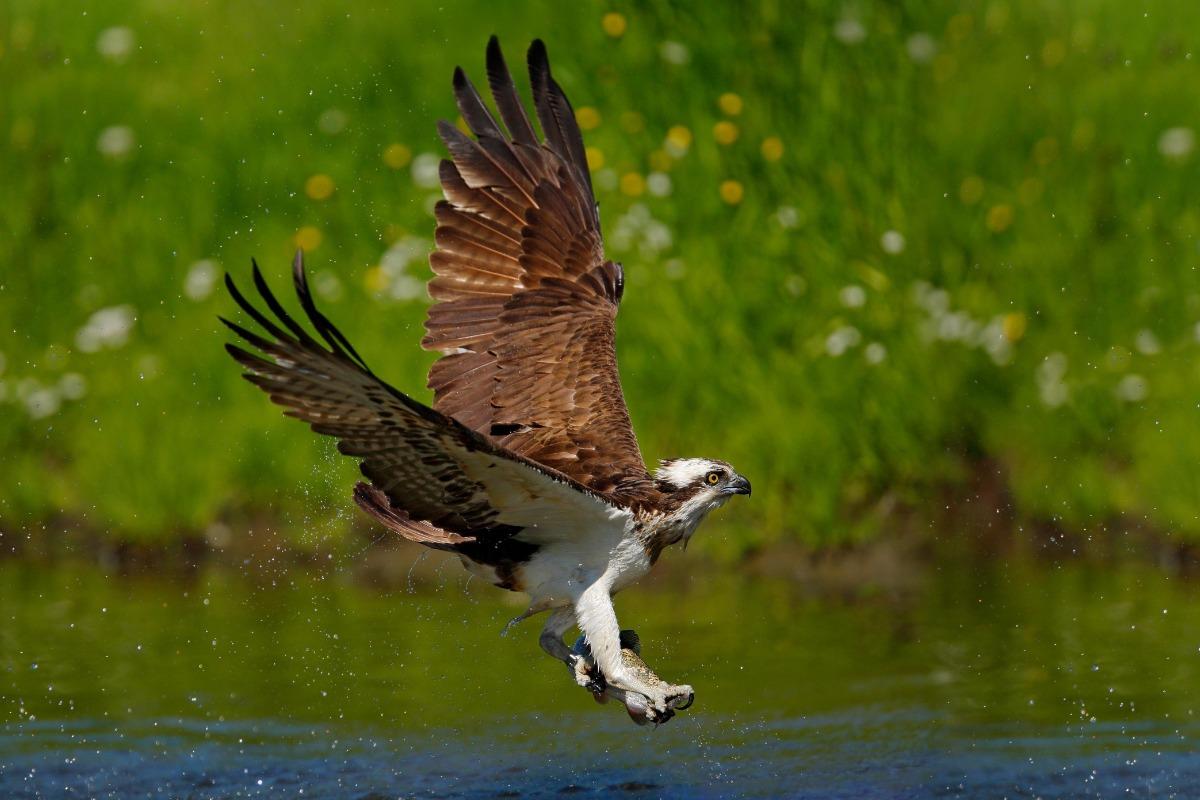
From the 1800s to the mid-1900s, sport hunting for ducks and other birds was a favorite activity for wealthy vacationers. As a result, private hunting lodges sprang up along the coastal bird migration route known as the Atlantic Flyway. Birds travel thousands of miles during migration, and many stop to rest at the same place year after year. From Jekyll Island, Georgia, to Corolla, North Carolina, hunters would gather at these migratory resting spots to take advantage of the easy pickings.
Sport hunting eventually took a toll the bird population, and it became clear to conservationists that waterfowl needed a safe haven on their journey along the coast. In 1937 the government decided that the area from Oregon Inlet to Rodanthe should be protected as a breeding ground for migratory birds. Today this area is known as Pea Island National Wildlife Refuge, a 5,834-acre nature preserve.
For more than 80 years Pea Island National Wildlife Refuge has been a sanctuary for birds, sea turtles, and other animals. In fall and winter, Pea Island becomes a temporary home for hundreds of species of migratory birds — now undisturbed by humans as they rest for days (or months) on their journey. No hunting is allowed in the sanctuary, so all wildlife is protected within its boundaries. Besides the magnificent birds that live or stop in the refuge, the island is home to deer, otter, red wolves, and other animals.
Getting to Pea Island
Pea Island is about midway on the Outer Banks island chain across the Sound from Alligator River National Wildlife Refuge on the mainland. It's a little over an hour's drive from Corolla in the north and about 50 minutes from Hatteras to the south.
What to Bring to Pea Island
Pea Island National Refuge has restrooms, but you'll want to bring plenty of water, sunscreen, a hat, binoculars, a birding field guide, a camera, and bug spray. If you'd like to fish from the surf or in the Sound, bring your fishing gear and license. The refuge includes a pristine, quiet beach that's ideal for swimming — bring your swimsuit, beach toys, and kites. There's enough to see and do on Pea Island that you may want to bring a picnic and stay all day.
Guided Tours
Whether you're an expert hiker or a novice outdoor person, start your visit at the informative Visitor Center. The center is open from 9 a.m. to 4 p.m. daily, or as volunteer staff is available. Take your time browsing the exhibits and wildlife viewing decks, then pick up a trail map to get the most out of your time on the island. Ask staff about that day's guided interpretive program, which may include a free birding walk or the opportunity to see, hear, and learn about endangered red wolves. These tours fill up, so it's a good idea to register ahead of time.

Exploring On Your Own
There are two wildlife trails that circumnavigate the refuge. The North Pond trail picks up right behind the Visitor Center and is a short and easy hike that passes through a half-mile of ponds full of ducks and freshwater turtles. There are 3 bird observation platforms as well as a double-deck observation tower. The second trail, called the Salt Flats Trail, picks up at the north end of North Pond. This path takes walkers along the top of the dike between Salt Flats and North Pond.
To explore the marshes of Pamlico Sound, book a canoe tour. Canoe tours are a novel way for families to get up close and personal with the birds and animals that live in this unique environment. Take your binoculars and watch for blue and tricolor herons, egrets, and oystercatchers.
The refuge also includes miles of unspoiled dunes and beaches. From the Visitor Center, cross the road and go over the dunes. Walk the shore hunting for seashells, and you can fly kites, make sandcastles, swim, or just enjoy the peace and quiet.
Birding
Pea Island National Refuge is a wonderland for birders. Bring your binoculars and your Life List, as you're likely to see waterfowl such as widgeons (including the rare Eurasian Widgeon), plovers, stilts, avocets, skimmers, terns, herons, and egrets. Watch for duck species such as black duck, pintail, canvasback, and redhead. Birds of prey in the refuge include osprey, peregrine falcon, kestrel, and harrier.
Pea Island National Refuge has been a safe haven for animals and a quiet respite for humans for decades. It's a beautiful place to experience the natural wonders of the Outer Banks and well worth a visit on your vacation.
Natural Beauty Right on Your Doorstep
Whether you're birdwatching, hiking, or simply taking in the stunning coastal scenery, this unique refuge offers an unforgettable experience. To make the most of your trip, book an Outer Banks vacation rental and enjoy the comfort and convenience of staying nearby. With Outer Banks Blue Realty, you can find the perfect rental that puts you right at the doorstep of this incredible natural sanctuary. Don’t miss the chance to reconnect with nature on your next Outer Banks adventure!

